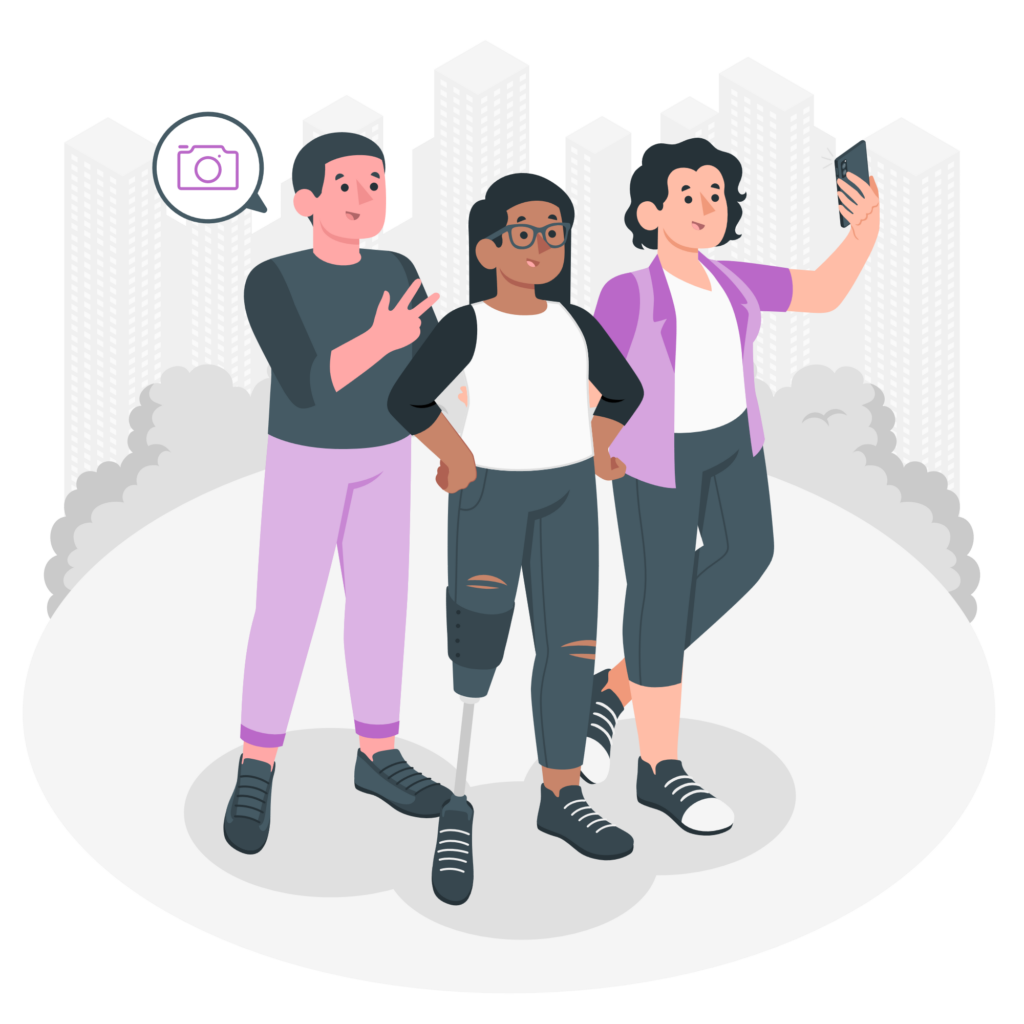Back to the Repository content
How do the affordances and constraints of digital learning spaces impact learners physically and mentally? Is it solely the learner’s responsibility to take care of their mental and physical conditions, or can these spaces be designed to be humane?
People illustrations by Storyset

Creating humane and respectful digital environments: prioritizing user autonomy and accessibility.
Key elements of humane digital designs include:
- User-Centric Design: Creating intuitive, accessible, and engaging designs with the inherently logical navigation, that rely on mental patterns, minimize distractions, and promote focus.
- Inclusivity and Accessibility: Ensuring content is accessible to all differently-abled users.
- Ethical Design Practices: Promoting transparency and user autonomy, while avoiding manipulative designs (techniques to be aware of).
- Interactive and Engaging Content: Use multimedia, and interactive elements.
- Personalization: Tailor learning experiences to individual and groups’ needs.
- Supportive Community: Foster a sense of community through forums and group projects.
Now, let’s put these concepts into practice! We will explore how instructional design strategies can foster user digital well-being by promoting humane digital spaces. By completing this activity, you will gain insights into the impact of digital learning resource design on user well-being and develop practical strategies for creating more humane and supportive digital spaces.
Practice:
- Select a digital learning resource you’ve used or are familiar with. This could be an online course, educational app, platform, or any website with learning content.
- Analyze the Design: Critically examine the design of your chosen resource through the lens of digital well-being. Include specific examples from the resource to support your points. Identify both strengths and weaknesses of the design in relation to digital well-being. Consider the following questions:
- User-Centric Design: Is the interface intuitive and easy to navigate? Does it minimize distractions and promote focus? How effective is the use of multimedia and interactive elements?
- Inclusivity and Accessibility: Is the content accessible to users with diverse needs and abilities? Are there options for different learning styles?
- Ethical Design Practices: Does the design respect user autonomy? Are there any manipulative elements or “dark patterns” that try to influence user behavior? Is information presented transparently?
- Engagement and Personalization: How engaging is the content? Are there opportunities for personalized learning experiences?
- Community Building: Does the resource foster a sense of community? Are there opportunities for interaction, collaboration, and peer support?
3. From Analysis to Action: Outline a Strategy for Humane Redesign
Building on your analysis, now propose a concise strategy for enhancing the digital well-being aspects of your chosen learning resource.
Focus on Concrete Improvements: Identify 2-3 specific areas where the design could be improved to better support user well-being, drawing directly from the strengths and weaknesses you identified. For each area, suggest one practical and actionable change to the interface, features, or interaction design.
Consider Both Designer and User Perspectives: For each proposed improvement, briefly explain how it addresses both the designer perspective (how the design change itself promotes well-being) and the user perspective (how this change empowers learners to better manage their well-being within the environment).
Example Implementation Points:
- If you identified overwhelming notifications: Propose a change to allow users granular control over notification types and delivery schedules. (Designer: Provides user control; User: Reduces distractions and promotes focus.)
- If you noted a lack of accessibility: Suggest adding alt-text to all images and providing keyboard navigation. (Designer: Makes content accessible; User: Enables participation regardless of visual or motor impairments.)
- If you found a potentially manipulative element: Propose removing the default “opt-in” for non-essential features and making the opt-out process clear and easy. (Designer: Respects user autonomy; User: Prevents unwanted engagement and promotes informed choices.)
4. Share Your Proposed Improvements: Briefly describe your 2-3 proposed changes and their potential impact on user well-being as a comment on this page. Be concise and focus on the practical steps and their rationale. Share the proposed strategy with your peers. Add your message as a comment on this page.
Leave a Reply